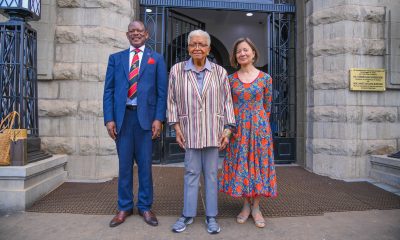Developed using a toy car as the prototype, one could hardly believe that it was going to be used in a real life car and be able to do the exact same functions. The cell phone based remote control technology will help minimise vehicles robbed per month by embracing the ICT based systems.
Developed using a toy car as the prototype, one could hardly believe that it was going to be used in a real life car and be able to do the exact same functions. The cell phone based remote control technology will help minimise vehicles robbed per month by embracing the ICT based systems.
The system works in such a way that the software is embedded into the microprocessor which acts as an intermediary between phone and vehicle and that is how commands are executed from the mobile telephone to the vehicle.
 The project is funded by the Faculty of Computing & IT and a car tracking company known as Uganda Motor Vehicle Safety and Remote Engineering Services owned by Engineer Wekesa John. He has been the brains behind the project since its inception in 2006.
The project is funded by the Faculty of Computing & IT and a car tracking company known as Uganda Motor Vehicle Safety and Remote Engineering Services owned by Engineer Wekesa John. He has been the brains behind the project since its inception in 2006.
The project has been faced by a number of challenges like inadequate operation in areas with poor mobile phone network reception. The other common problem faced is with financing, though this is being worked on after submission of a funding proposal to the University.
The project as a vehicle safety system is unique in that unlike most alarms which only operate within a certain range, this has no limited working range. The other would be that unlike other companies which rely on computer-based tracking systems, one only needs his mobile phone to locate his/her vehicle.
The project is expected to kick off by the end of July 2010 and technical staff have already been trained to assemble and in install the components being imported from Singapore at a cost of 300 to 400 US dollars depending on the number of functions. These functions include; engine start/stop, hooting, window operation and camera functionality and the customer will be left with the option of choosing which functionality they would like to have in their car. The project is targeting private car owners, transport companies and corporate companies with vehicle fleets.
Article by Isaac Musimenta

 General6 days ago
General6 days ago
 General1 week ago
General1 week ago
 General2 days ago
General2 days ago
 General2 weeks ago
General2 weeks ago
 General1 week ago
General1 week ago


